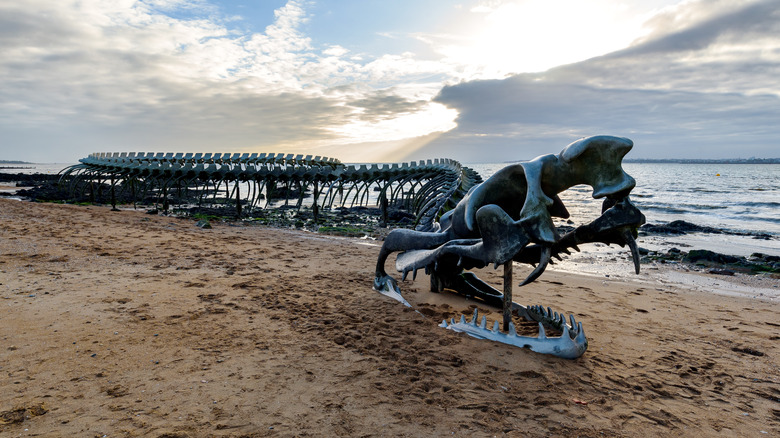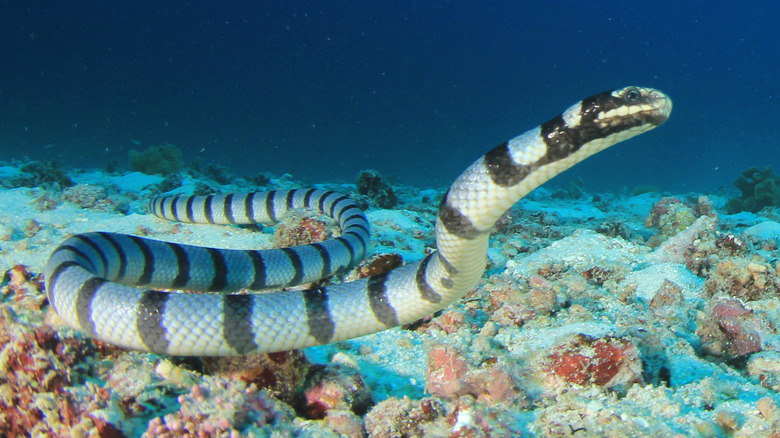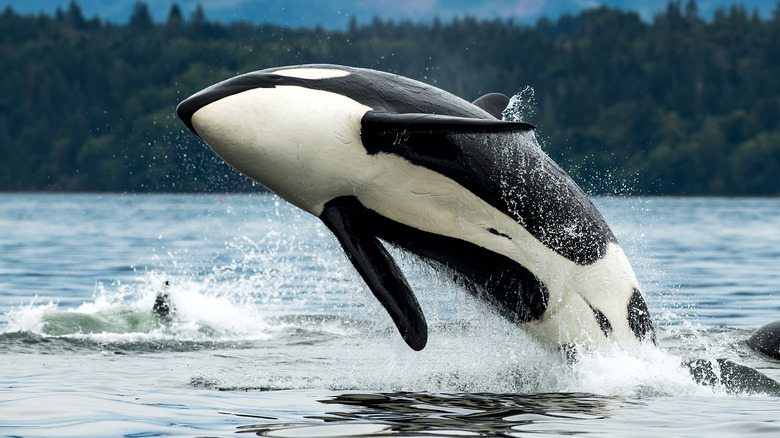What We Know About A Terrifying, Prehistoric Sea Snake
Compared to the animals of today, the fauna of eons past seem to belong to a different world. As recently as the last ice age, which Live Science says began 2.6 million years ago and lasted until about 11,700 years ago, giant mammals roamed the world. Early humans would have had to contend with the likes of wooly mammoths, enormous deer, saber-tooth cats, and giant sloths (via Proceedings of the National Academy of Sciences).
Before human feet first tread the plains of Africa, even stranger creatures roamed the world. Swimming in the oceans was the megalodon, a 60-foot shark that dwarfed any modern great white. In Africa, 400-pound otters shared the land with our ancestor, Australopithecus. In North America, horses the size of dogs roamed the forests and prairies.
Go back even further, to the dawn of modern animal life around 55 million years ago, and 1,000-pound bear dogs hunted from Asia to America. Modern whales began to emerge, with some cetaceans being fully aquatic, while others continued to use their legs in coastal environments, per Whales Online. And between Africa and the European archipelago, in the Trans-Saharan Seaway, the largest sea snake to have ever lived prowled the waters.
Colossal ancient snake
The first snakes likely diverged from their lizard ancestors around 126 million years ago while tyrannosauruses and triceratopses roamed the broken pieces of Pangea. After surviving the catastrophic impact of the Chicxulub asteroid that consigned 75% of all species to the fossil record 66 million years ago, their population and diversity flourished.
It was during this period of diversification that snakes reached their greatest size. Sixty million years ago in the lush jungles of modern-day Colombia the Titanoboa — the largest snake ever — preyed on oversized turtles and crocodiles. Around the same time, the largest sea snake — Palaeophis colossaeus — called the waters north of Africa home (via Acta Palaeontologica Polonica).
It's hard to know just how big Palaeophis colossaeus was due to its fragmentary fossil record, but it's believed that it could have been up to 40 feet long, just a few feet shy of Titanoboa's record. Sea snakes today only grow to about six and a half feet, about a quarter of the size of Palaeophis colossaeus (via Sea World).
Did it really eat whales?
Figuring out what Palaeophis colossaeus could eat depends entirely on how big its skull was, and unfortunately, one has never been found. What we can do instead is speculate. Researchers tried to extrapolate a potential diet by looking at snake skull morphology in general. They found that if Palaeophis colossaeus had a skull structure like modern snakes, it would be capable of consuming nearly anything living at the time.
Those same researchers also believe that Palaeophis colossaeus lived in coastal waters predating both land and sea creatures. The sediment in Mali in which Palaeophis colossaeus was discovered dates to the early Paleogene era, just a million or so years after the dinosaur-ending asteroid, but is known to have lived into the Eocene around 45 million years ago. This just happens to be the time when the first whales start showing up in fossil records.
So assuming that our colossal ancient snake had a mouth similar to its modern descendants, there's every chance it could have made a meal out of the first whales. What else might it have eaten? The proto-elephants of the time were only the size of a rabbit so might have been fit for a snack. The 15-foot-tall hornless rhinos on the other hand might have made for a proper meal.


